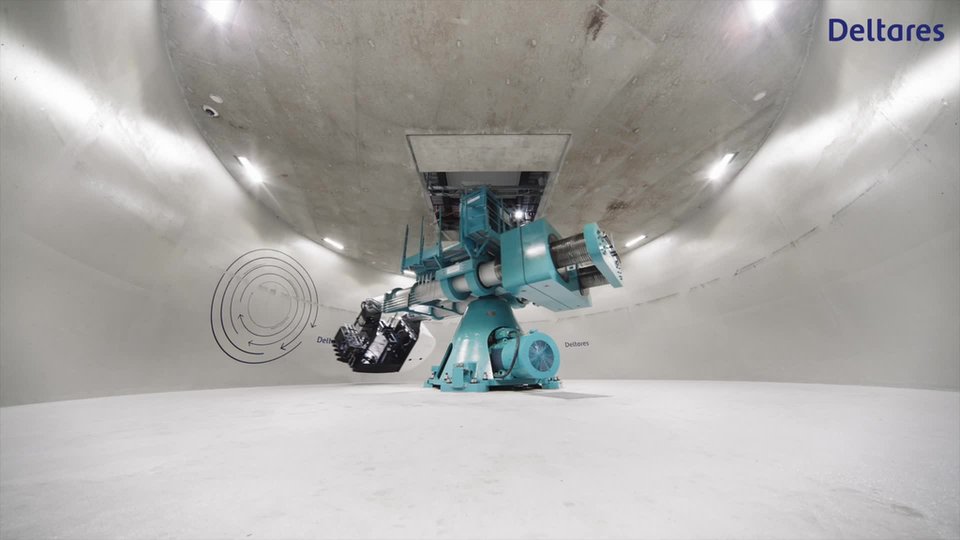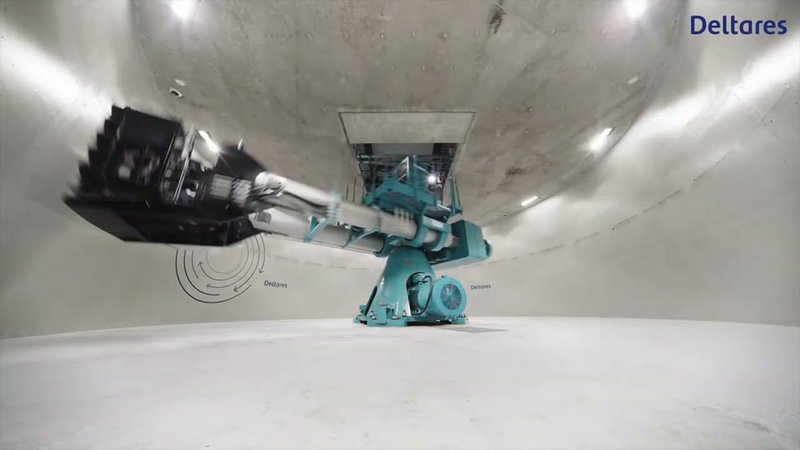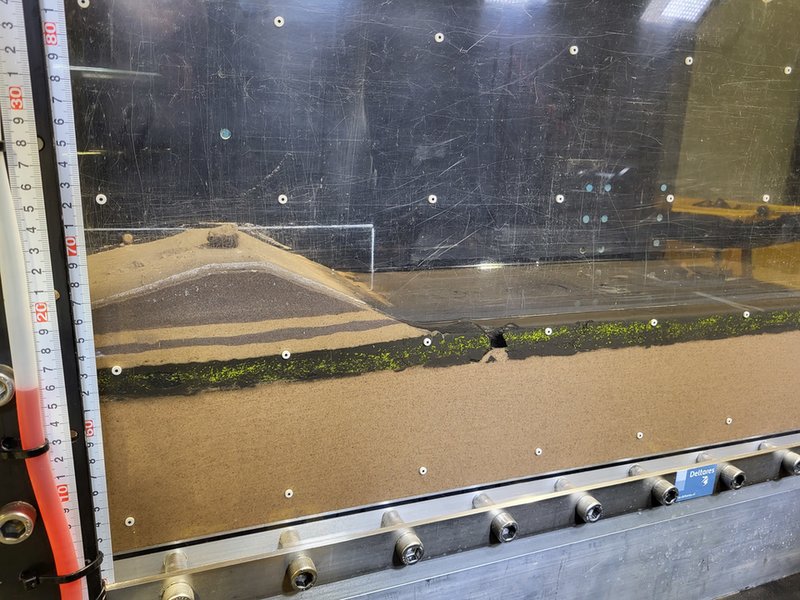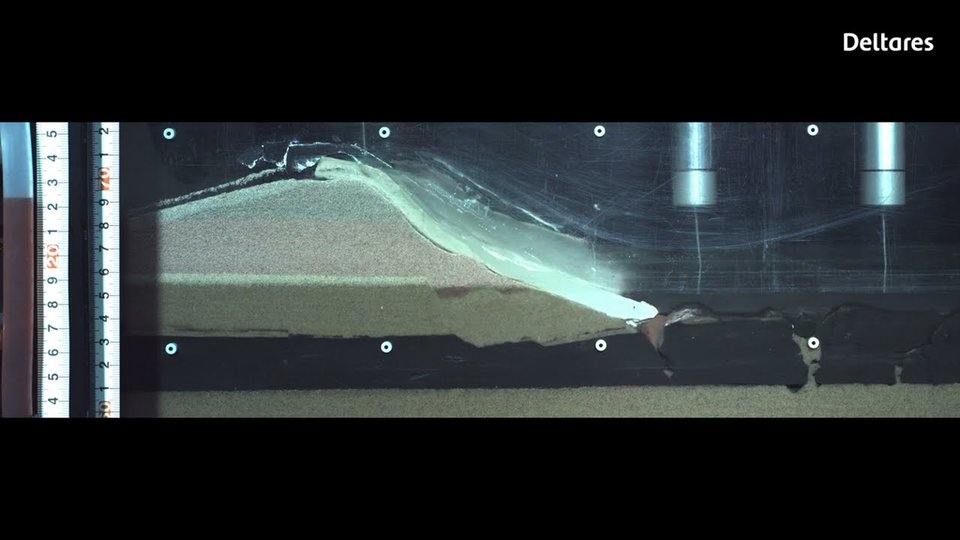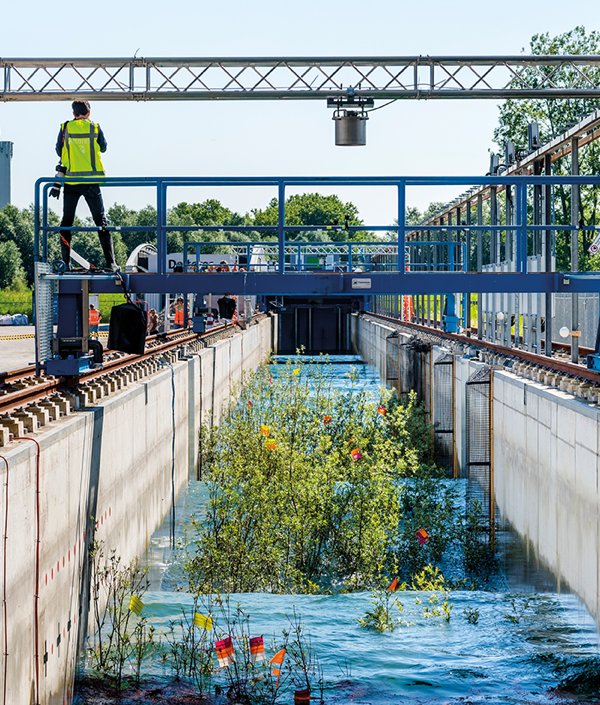Dike stability investigated in the GeoCentrifuge
The GeoCentrifuge is a unique test facility at Deltares where we can simulate actual geotechnical processes to scale. We recently investigated the stability of a dike in our centrifuge, looking in particular at the process of ‘up lift'. We did this by scaling the dimensions of the real dike body and layer thicknesses.
Baseline values for heave are too conservative
High river levels push up pore pressure in the sandy substrates. The clayey topsoil at the toe of the dike can lift up as a result. If the pore pressure increases further, it can rupture the layer and form ongoing cracks. This often initiates dike instability or reverse erosion below the base of the dike. In the dike world, we use models during assessments and tests on dikes for flood risk management. The baseline values of these models are conservative because they involve human safety. Dike managers have said, on the basis of their experience, that dikes can often take more than suggested by the models, hence this practical research.
In preparation for a large-scale field test with a dike that is now redundant, a series of thirteen centrifuge tests were first completed. Cor Zwanenburg, dike expert: ‘Our primary aim here is to acquire experience with the mechanism so that we have a clearer picture of the pressures at which failures occur and where to position measuring instruments. Secondly, during the field trial, we can test only the subsurface at the location and the dike profile. In the GeoCentrifuge, we can vary the subsurface and the dike structure relatively easily. This helps to convert the research results from the field trial location into a computing method that can be used elsewhere.’
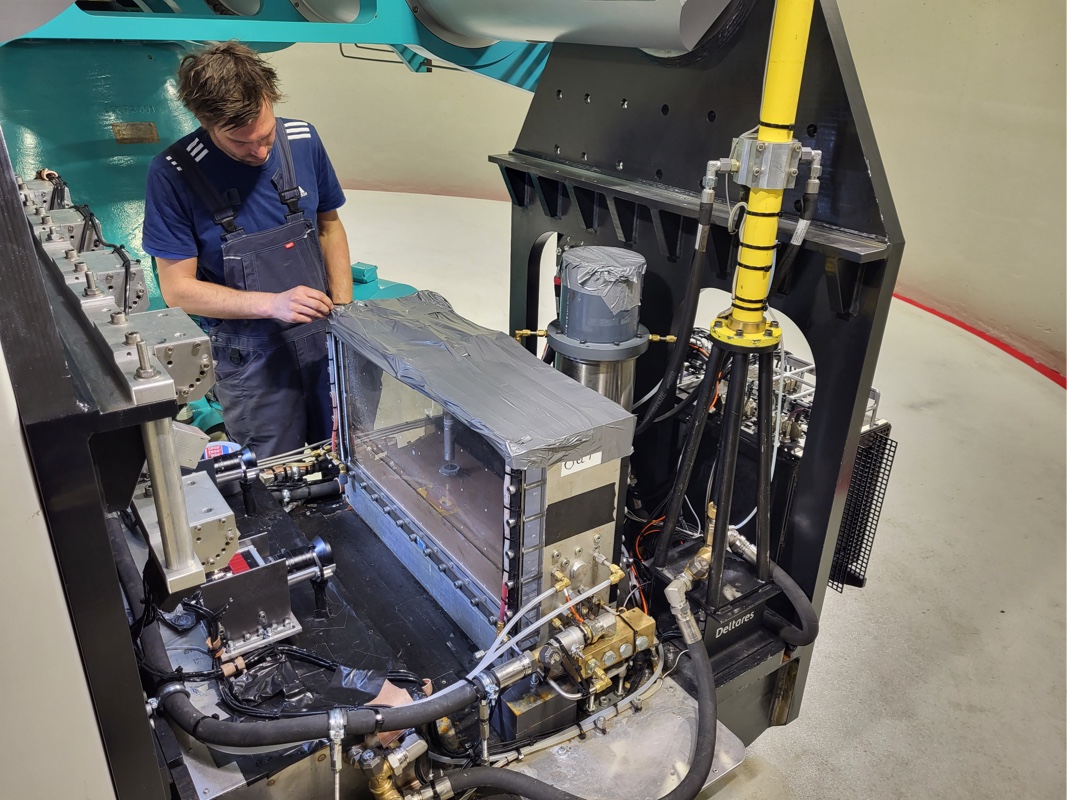
Placing scale model of the levee in Deltares' GeoCentrifuge.
“Which we saw in the GeoCentrifuge, may mean that we can start to use different computing methods nationwide to assess the stability of dikes”
Cor Zwanenburg - Dike expert

Placement of monitoring equipment in the GeoCentrifuge.
Striking results of the GeoCentrifuge tests
The GeoCentrifuge tests were conducted with three different layer thicknesses that are representative for the clay layer at the dike toe. In the tests, clay layer thicknesses of one and a half, three and six centimetres were exposed to 80-100 g-forces. That corresponds to a prototype dike with a thickness of several metres. A striking result to emerge immediately was that there was no textbook rupturing. However, uplift – the top layer coming loose from the sand layer – was clear to see. The top layer slides to the side or is squeezed together horizontally like a harmonica. The dike slope then follows naturally. Another striking feature were the boils seen in some trials. In particular in the clay that had been preconsolidated at low pressures, it was noticeable that horizontal cracks formed in the clay that was pulled apart during the uplifting process. The dike experts did not expect this either.
Tested amendments deliver cost savings
The tests conducted in the GeoCentrifuge, in combination with large-scale tests on the old IJsselmeer dike, should provide a better understanding of the process of rupturing, the strength of the dike and, more specifically, the failure mechanisms of piping and macrostability.
The underlying values can then be amended, with potential cost savings as a result. That is because, on the basis of the current conservative values, dikes are more likely to qualify for upgrade operations. The practical trials may save many kilometres of work on upgrades.
